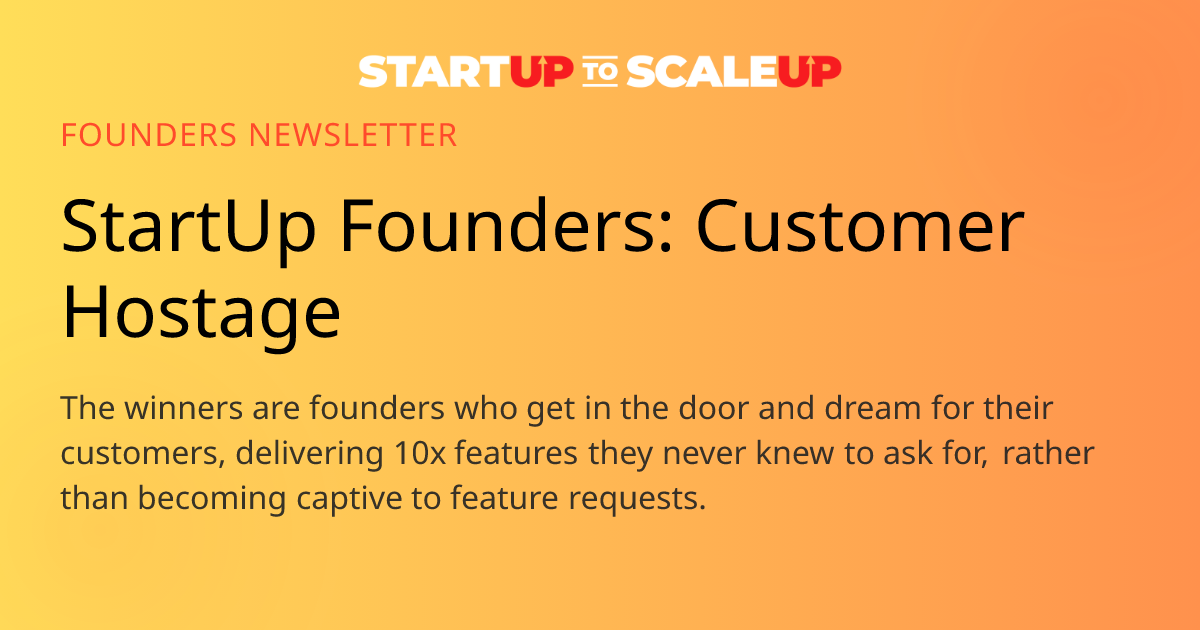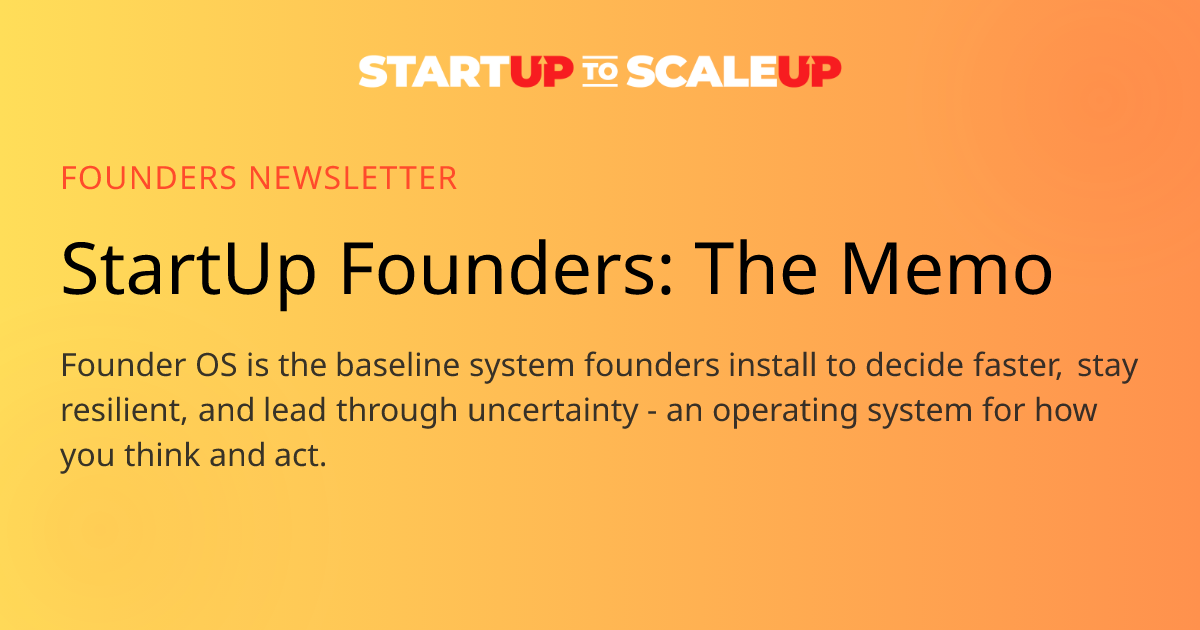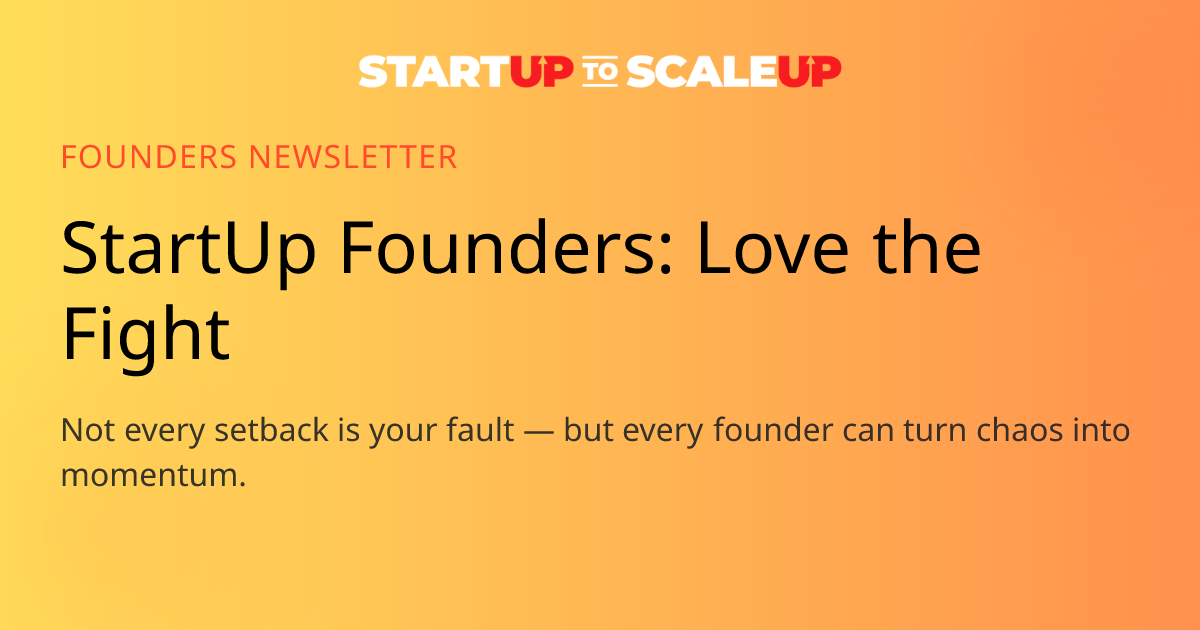Startup Onboarding Optimization: How Mastering the First Touchpoint Boosts Conversion, Retention, and Revenue Growth
Published November 5, 2023
Core Takeaway
TLDR
- User onboarding is the make-or-break moment where founders lose the revenue they fought hard to acquire; neglecting it is like having a silent churn machine working against you.
- Most founders overlook onboarding friction points, lacking data on where users hesitate or drop off, despite tools to test and optimize being essentially free to implement.
- Effective onboarding requires both a detailed User Journey Map (understanding emotional touchpoints) and a Conversion Funnel analysis (tracking metrics at each step) to systematically eliminate friction.
Newsletter
"User onboarding is guiding the uninitiated all the way to their own personal promised lands." - Sam Hulick
Hey Reader,
StartUp Founders who realize that wars are won and lost in the trenches of user onboarding, and give it the rightful attention, see every single metric move double digits in the right direction. 🚀
In my experience, a majority of first-time founders overlook the reality of their onboarding (the journey from first contact to customer), cling to the MVP excuse, overestimate its effectiveness, lack solid data, and miss that it's usually the easiest fix to prevent revenue loss.
If you're unaware of where users hesitate, even for a split second, down to the exact field, or if you're clueless about conversion rates at each step, it's worse than flying blind; you're missing the essence of a predictable, optimizable system. Implementing this costs you nothing - no time, no skill, no investment. This week, we're zeroing in on the overlooked revenue in every missed detail.
LAST WEEK:
The Unstoppable Force: A Fraction More Obsession Than Talent - Talent is not a strategy; it's a resource. Being talented is expected; being obsessed is your edge.
LETS GET INTO IT:
How many people have you watched come through your onboarding process from scratch this week? If you could increase conversions 20% would that motivate you, what about 250%?
Matthieu Rouif, CEO of PhotoRoom, $50mm ARR in 3 yrs, customer-obsessed said, "We used to go to McDonald's & pay for people's food in return for their testing the product....let them try onboarding and give us feedback." What's your excuse?
Your mission is to convince users that your offering will enhance their lives, swiftly building trust. Regardless of your product, users will face annoying tasks - filling fields, creating profiles, granting permissions. Your job is to accelerate TTV (Time to Value) and be right there to help them, every single step of the way...
Onboarding isn't a linear journey; it's an ecosystem of touch points, each with the potential to amplify or diminish the perceived value of your product before they even see how wonderful it may be. Every step or hurdle must have mega impact on user value.
You don't have the leverage of Instagram to just lob a user/pass screen and assume your users will do the work. Ditch the old school concepts of delayed gratification, even for enterprise apps with mandatory use, don't postpone the reveal. Delight users from the start, unveil value early, and spark anticipation immediately.
Onboarding isn't just about the login service you use; which is still your responsibility, even if it's a "security" step, even if it's outsourced. Every single step, no exceptions, yup, even the 2FA. Sometimes, it's unnoticed obstacles or process gaps you took for granted as part of the sequence that can sabotage conversions.
Onboarding is the silent churn machine, quietly working against you, undermining every lead you fought so hard to acquire.
MVP is Minimum Viable Product, not Mostly Void Of Planning. The market no longer accepts your "it's just an MVP" excuse for a poor experience. With today's tools, there's no reason for a lackluster intro to your product. You literally have no excuse; it costs zero to test, to A/B, to refine, to adjust. If it means backend gymnastics or API wizardry to remove even a fraction of friction for your users, do it.
Mastering user onboarding requires a two-pronged approach: crafting a detailed User Onboarding Journey Map and meticulously analyzing your Conversion Funnel.
The Journey Map is your blueprint, charting each interaction from the initial hello to customer, complete with emotional touch points and decision triggers. It's about understanding the "why" behind each step and tweaking them to tip the scales in your favor.
Simultaneously, the Conversion Funnel is your metric-driven reality check, tracking the percentage of users who advance through each phase of your onboarding. It's a critical tool for identifying drop-off points and optimizing the flow towards conversion.
Together, they form a comprehensive strategy. It's not just about the actions users take; it's about the thoughtful communication, the strategic reminders, the targeted retargeting, and the educational nudges that collectively inch users closer to commitment.
So, as you are thinking about raising another round, is it just to funnel more prospects into your leaky journey? That's not growth, its waste, its deeply inefficient, and its not frugal thinking.
Know this. Investors are watching. They know that user empathy shines brightest here. A seamless onboarding isn't just a nice-to-have; it's a glaring indicator of your startup's health. They can infer so much about you as a founder by how you treat prospects at the first hello.
So, watch your onboarding. Then watch it again. And again. Iterate until it is so intuitive, that it feels like a welcome mat rolled out for your users. One of the only things you can control is your clock speed, how quickly you can release, learn, iterate, release again.
No secret here. Unclaimed revenue is a gift to your competition.
-- James
How Can I Help?
- Grab 1:1 time with me here
- Working on a community thing, if you have interest in helping it launch, develop and deliver value at scale, please reach out.
Frequently Asked Questions
More Newsletters
Continue Your Founder Journey
Explore all the resources available to help you build and scale your startup
Startup Frameworks Library
Subscribe to the Newsletter
Join 140,000+ founders getting exclusive strategies, frameworks, and founder stories every Sunday.
Get instant access to the 50-Step Founder Playbook downloaded over 1M times



